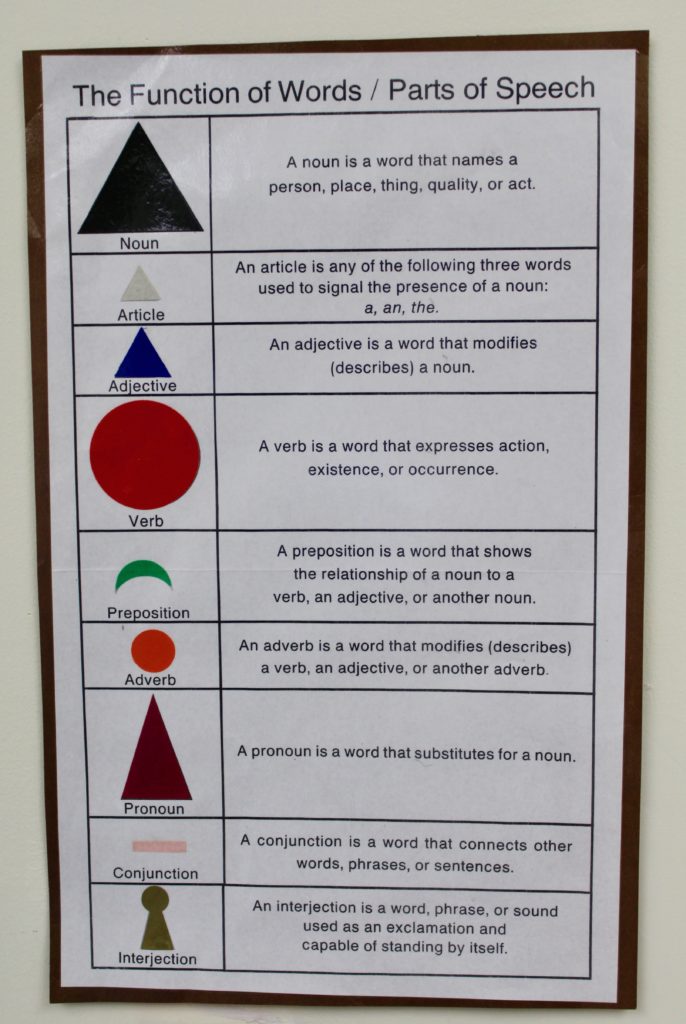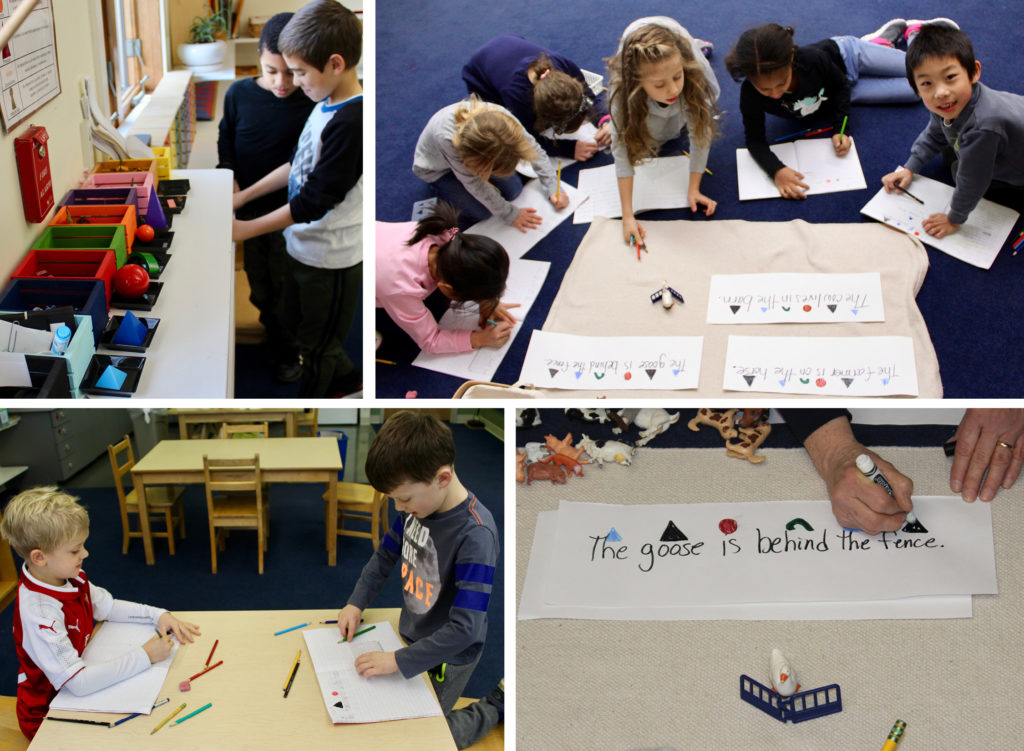
This segment “Did you know?”, highlights facts about the Montessori philosophy, Montessori materials or curriculum, and Princeton Montessori School. These short entries in the online newsletter are meant to give insight into components of your child’s experience that you otherwise would not know.
–
–
Did you Know?
–
Grammar is taught in a way that reinforces the functionality of words rather than words as static parts of speech?
–
 Did you know…in a Montessori school grammar is taught in a way that reinforces the functionality of words rather than words as static parts of speech?
Did you know…in a Montessori school grammar is taught in a way that reinforces the functionality of words rather than words as static parts of speech?
–
What it is: Dr. Montessori designed unique grammar symbols that are accompanied by a story of the ‘family of words’ and how they help each other to accomplish the noble human task of communication.
–
How it works: Children are introduced to each grammar symbol through a story and an activity that involves an action the part of speech accomplishes. For example, the verb is introduced as a red ball, an object in motion, and children play the ‘game’ of making the red ball do various actions, understanding concretely that verbs are action words. A large, sturdy black triangle represents nouns. From this stable object springs the rest of the ‘noun family’ – articles, adjectives, and pronouns. Children use these symbols in their sentence construction and in identifying parts of speech when reading. Like the rest of the Montessori materials, the grammar symbols match children’s development where it is and engage their learning based on their own innate curiosity.
–
Why it matters: Rather than memorizing parts of speech and the words that fit into those categories, children develop a life-long understanding of the purpose words play and how that can change, depending on the sentence, language, and intent of the speaker or writer. By presenting the materials in story form, which locks information in the brain, and by providing logical symbolic representation of the parts of speech, Montessori teachers provide children the gift of deep understanding of language.
